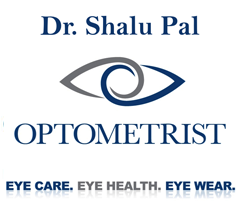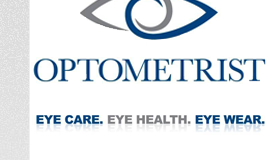Contents |
Overview
Macular degeneration (MAK-yu-lar DEE-gen-er-a-shon) is a chronic, progressive disease that is the leading cause of legal blindness in adults over 50 years of age. Referred to as ‘age-related macular degeneration’ or AMD, it got this name because it is commonly associated with aging.
When the tissue in the macula, the central part of the retina, deteriorates, it causes macular degeneration. The macula is a miniscule section of the retina comprised of millions of light sensing cells that are responsible for central, or straight ahead vision. They help see such things as colour and fine details when looking directly at objects. Yellowish deposits composed primarily of hyaline are present in one of the inner layers of the retina, called Bruch’s membrane. These deposits, when large enough, can cause areas of the macula to rise, resulting in visual distortions. As the condition progresses, the light-sensitive cells, or photoreceptors, lay over the top of the thickened areas of the macula. They become thin or damaged and can subsequently lead to loss of central vision. AMD does not affect peripheral (side) vision and usually does not cause complete blindness.
There are two types of AMD:
- Dry (atrophic) macular degeneration is the more common form with approximately 90 per cent of macular degeneration patients diagnosed with this condition. The thinning of macular tissue produces a subtle vision loss such as the unclear appearance of objects or blank spots in areas of the eye’s central vision.
- Wet (exudative) macular degeneration. Although this type of AMD occurs in only about 10 per cent of the known cases, it leads to more serious vision loss. Blood vessels grow beneath the retina and leak blood and fluid into the eye area. This damages retinal cells and causes scar tissue to form on the retina.
Causes
The exact causes of AMD are still unknown, although age and heredity appear to be the dominant factors. Other causes associated with the ailment include high blood pressure, excessive exposure to ultraviolet light, heart disease, obesity and smoking. Race and gender also play a role, as whites and females tend to contract the disease more than their counterparts do. AMD might also occur as a side effect of certain toxic drugs such as an anti-malarial drug called Aralen (chloroquine); phenothiazine, an anti-psychotic drug, and Thorazine (chlorpromazine) used to treat nausea and vomiting.
Symptoms
AMD usually develops gradually and painlessly. Eyecare practitioners are sometimes able to detect early signs of the disorder before the patient notices the symptoms. They vary, however, depending on the type of macular degeneration.
In dry AMD, the symptoms include:
- Gradual blurring of vision
- Colours that appear more dim
- A blind spot in the centre of the eye
- In severe cases, faces and printed words may be difficult to recognize
In wet AMD, the symptoms include:
- Visual distortions such as straight lines appearing wavy
- Sudden, decreased central vision
Treatment
Early detection of macular degeneration is essential to prevent severe vision loss. Persons over 55 years of age should have regular eye examinations, especially if there is a family history of AMD. Simple vision tests using an Amsler grid, a chart with a grid of straight lines, can detect early vision changes. In addition, a visual field screening can measure peripheral vision and can show symptoms that might otherwise be difficult to detect. Furthermore, many eyecare practitioners believe that a diet that is high in certain nutrients and antioxidants such as zinc, vitamins A, C and E, and lutein can help lower the risk or arrest the progression of AMD. Click here for more information regarding nutritional effects on the progression of AMD.
Photodynamic therapy treats the wet form of AMD. This procedure uses a cold laser and an intravenously injected light-sensitizing dye. The dye collects in the newly formed blood vessels of the macula and when activated by the laser, the dye releases substances that seal off the blood vessels without damaging the retina.
Laser treatment might aid wet AMD patients by destroying new blood vessels that have developed under the macula to prevent leakage. Only 20 per cent of AMD patients, however, are currently candidates for this operation.
In the majority of cases, it is impossible to restore the vision lost by AMD. There are many devices available that facilitate daily activities such as magnifying lenses, bright lights, large-print books, clocks and telephones. In addition, some low vision aids shift images to the periphery so that they are clearer.
Many low vision services such as orientation and mobility training, audio books, high-tech aid assessments, and computer assessments are available from the Canadian National Institute for the Blind (CNIB). Please consult your eyecare practitioner for more information.





